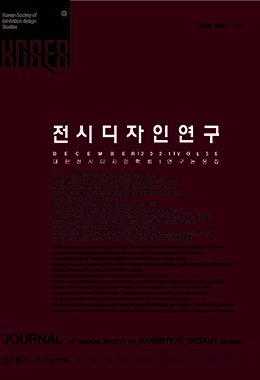1970년대 한국 단색화에 대한 그동안의 논의들은 한국현대미술의 전통성뿐만 아니라 동양적 세계관과 한국적 미학에 관련하여 다루어지며 이어지고 있다. 본 연구는 1970년대 한국적 모더니즘의 시작을 알리는 의미로서, 단색화 작가들의 표현에 있어 색이라는 도구, 그리고 표현의 공간이 되는 캔버스를 어떤 의미로 사용하여 왔는지를 중점적으로 다루고 있다.
70년대 단색화에 관한 논의에서 1975년 일본 도쿄화랑에서 개최된 《한국 5인의 작가 다섯까지 흰색》전시(1975.5.6.∼5.24, 東京畵廊)는 한국 단색화 회화의 특성에 관련하여, 하나의 의미 있는 기점으로 파악되고 있다. 1970년대 한국 단색화 회화에서의 캔버스는 하나의 ‘장(fields)’으로서 하나의 색채처럼 사용되었다. 그것은 캔버스 이상의 하나의 정신적 공간으로서의 의미를 가지고 있으며, 이러한 고찰은 향후 단색화의 정체성을 알리는 전시에서 참고가 될 것이다.
Discussions on Korean monochromatic painting in the 1970s have continued with not only the tradition of Korean contemporary art, but also with the oriental world view and Korean aesthetics. This study as a sign of the beginning of Korean modernism in the 1970s, focuses on the meaning of using a tool called color in the expression of monochromatic artists and canvas, which is a space for expression. In the discussion on monochromatic painting in the 1970s, the exhibition "White to Five Korean Artists" held in 1975 at the Tokyo Gallery in Japan (May 6, 1975 to 5.24), is considered a meaningful starting point in relation to the characteristics of monochromatic painting in Korea. In the 1970s canvas in Korean monochromatic painting was used as a field like a color. It has a meaning as a mental space more than a canvas, and beyond the meaning of color dealt with in color studies, This consideration will be a reference in future exhibitions to inform the identity of monochromatic painting.




